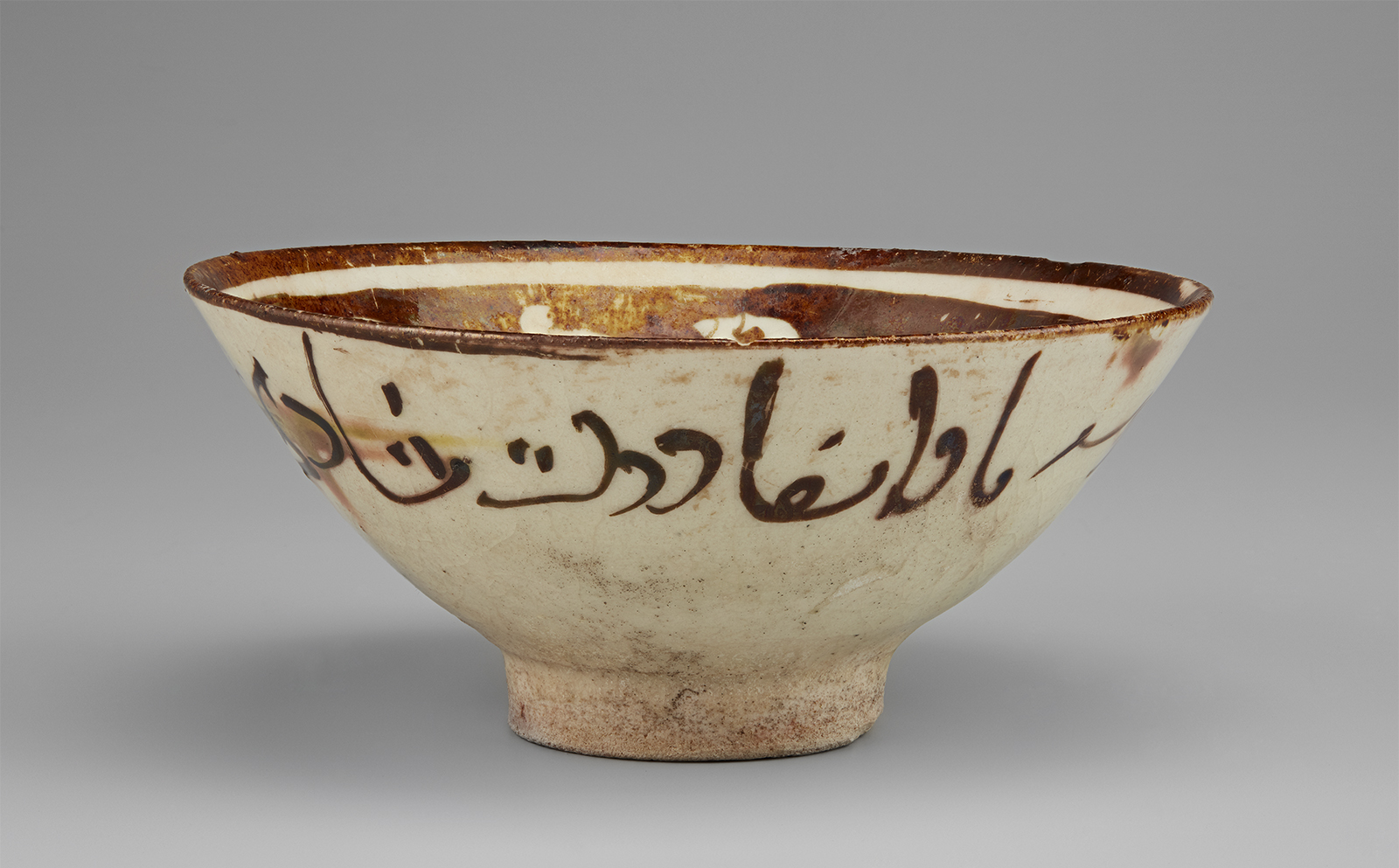Click on the image to zoom
Bowl with a fantastical elephant-headed creature
- Accession Number:AKM556
- Place:Iran
- Dimensions:15.2 cm
- Date:early 13th century
- Materials and Technique:fritware, lustre-painted
Sphinxes, harpies, and simurghs are among the fantastical beasts that appear on a special group of sparkling, lustre-glazed ceramics from Iran made between the 12th and 13th centuries. With their large central motifs, they evoke the lustre-glazed bowls made in Egypt during the Fatimid period (909–1171; see AKM684). The elephant-headed bird depicted here is a unique creature not found elsewhere. It must be the product of the potter’s vivid imagination—inspired, perhaps, by the mythical birds described in Persian poetry. On the exterior of the bowl are verses from Persian poetry, scrawled rather carelessly in contrast to the fine drawing of the interior of the bowl.
— Marika Sardar
Note: This online resource is reviewed and updated on an ongoing basis. We are committed to improving this information and will revise and update knowledge about this object as it becomes available.








